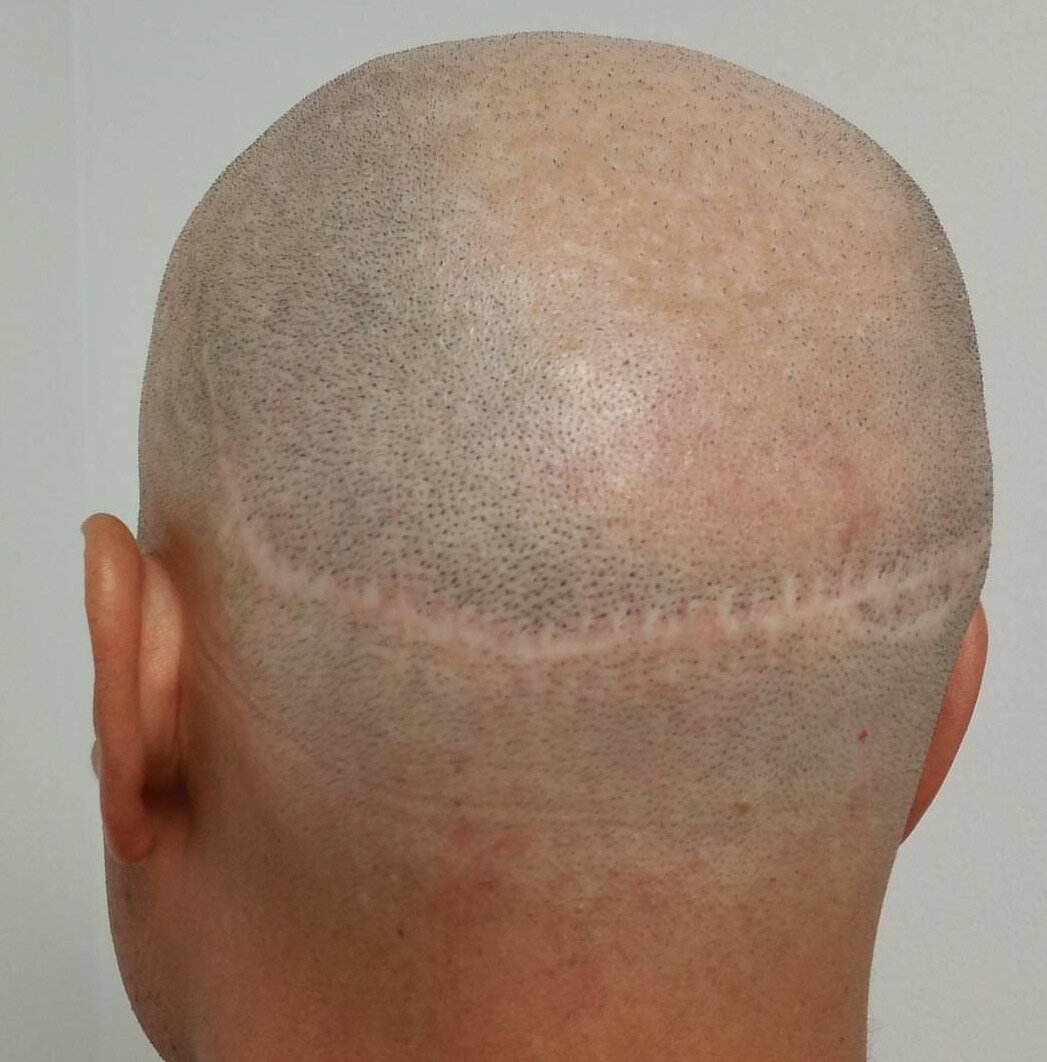Things to Consider Before Investing in a Hair Transplant
Things to Consider Before Investing in a Hair Transplant
Before making the decision to invest in a hair transplant, it’s crucial to weigh several factors to ensure you're choosing the right solution for your hair loss concerns:
Type of Hair Loss: Understand the specific type and stage of your hair loss. Not all conditions, such as thinning hair or balding, are suitable for hair transplant procedures. Consulting a specialist can help determine if you're a good candidate.
Realistic Expectations: Set practical expectations regarding the outcomes. While a hair transplant can yield significant improvements, it’s essential to recognize that results may vary based on individual factors like hair density, hair type, and the skill of the surgeon.
Costs and Financial Commitment: Hair transplants can be a significant financial investment. Consider the full range of costs, including consultations, procedures, and any follow-up treatments. Assess whether it aligns with your budget and long-term financial goals.
Alternative Solutions: Explore other options available for hair restoration, such as Scalp Micropigmentation (SMP). This procedure can provide a fuller look without the need for surgery and can often be more cost-effective.
Recovery Time: Understand the recovery process following a hair transplant. Some individuals may experience discomfort or downtime that can affect daily activities. Ensure you have a clear plan for managing recovery.
Surgeon Qualifications: Research the qualifications and experience of the surgeon. The success of a hair transplant largely depends on the expertise of the provider, so ensuring they have a strong track record is vital.
Long-Term Care: Consider the ongoing maintenance and care required after a hair transplant. This includes proper hair care and possibly additional treatments over time to maintain results.
Psychological Impact: Reflect on the emotional implications of undergoing a hair transplant. While many people find significant boosts in confidence, it’s important to mentally prepare for the changes and adjustments that come with the procedure.
By carefully considering these factors, you can make an informed decision regarding hair restoration options. Whether you choose a hair transplant or explore alternatives like Scalp Micropigmentation, ensuring you are well-informed is key to achieving the results you desire.
Hair loss can be a challenging and emotionally taxing experience, and for many, a hair transplant may seem like the ultimate solution. However, before you invest several thousand dollars into a hair transplant procedure, there are several important factors to consider. Understanding these aspects can help you make an informed decision and ensure that you achieve the best possible results.
1. Understand the Different Types of Hair Transplants
There are primarily two types of hair transplant procedures:
Follicular Unit Transplantation (FUT): This method involves removing a strip of scalp from the donor area (usually the back or sides of the head) and dissecting it into individual follicular units. These units are then transplanted into the recipient area. FUT can leave a linear scar at the donor site.
Follicular Unit Extraction (FUE): This method involves extracting individual follicular units directly from the donor area using a small punch tool. These units are then transplanted into the recipient area. FUE typically results in small, circular scars that are less noticeable than the linear scar from FUT.
Each method has its own advantages and disadvantages, so it's essential to understand the differences and discuss them with your surgeon.
2. Research Your Surgeon Thoroughly
The success of a hair transplant largely depends on the skill and experience of the surgeon. Before committing to a procedure, do thorough research:
Credentials and Experience: Ensure the surgeon is board-certified and has extensive experience in performing hair transplants.
Before and After Photos: Review the surgeon's portfolio of before and after photos to assess the quality of their work.
Patient Reviews: Read reviews and testimonials from previous patients to gauge their satisfaction and experiences.
Consultation: Schedule a consultation to discuss your goals, expectations, and any concerns you may have. This is also an opportunity to assess the surgeon's communication skills and bedside manner.
3. Consider the Costs Involved
Hair transplant procedures can be expensive, with costs ranging from several thousand to tens of thousands of dollars, depending on the extent of the procedure and the surgeon's fees. Consider the following financial aspects:
Initial Cost: The upfront cost of the procedure, including the surgeon's fee, anesthesia, and facility charges.
Follow-Up Costs: Potential costs for follow-up appointments, medications, and any necessary touch-up procedures.
Travel and Accommodation: If you're traveling to see a specialist, factor in the costs of travel and accommodation.
Insurance Coverage: Most insurance plans do not cover hair transplant procedures, so be prepared to pay out of pocket.
4. Evaluate Your Expectations
It's crucial to have realistic expectations about the outcomes of a hair transplant. Consider the following:
Results: Understand that hair transplants can provide natural-looking results, but they may not restore your hair to its pre-loss density or thickness.
Recovery Time: Be prepared for a recovery period that may include swelling, redness, and scabbing. It can take several months to see the full results.
Maintenance: Hair transplants require ongoing maintenance, including proper hair care and possibly additional procedures in the future.
5. Explore Alternative Treatments
Before committing to a hair transplant, explore other treatment options that may be more suitable for your needs and budget:
Medications: Topical and oral medications like minoxidil and finasteride can help slow hair loss and promote regrowth.
Low-Level Laser Therapy (LLLT): This non-invasive treatment uses laser light to stimulate hair growth.
Scalp Micropigmentation (SMP): SMP is a non-surgical procedure that uses specialized pigments to replicate the appearance of hair follicles, providing a natural-looking solution to hair loss.
6. Assess Your Overall Health
Your overall health can impact the success of a hair transplant. Consider the following:
Medical Conditions: Certain medical conditions, such as diabetes or autoimmune disorders, can affect healing and the success of the procedure.
Medications: Some medications can interfere with the healing process or the effectiveness of the transplant.
Lifestyle Factors: Smoking, excessive alcohol consumption, and poor nutrition can all negatively impact the outcome of a hair transplant.
7. Plan for Post-Operative Care
Proper post-operative care is essential for the success of a hair transplant. Consider the following:
Follow-Up Appointments: Schedule and attend all follow-up appointments to monitor your progress and address any concerns.
Medications: Take any prescribed medications as directed to promote healing and prevent infection.
Activity Restrictions: Follow your surgeon's guidelines for activity restrictions, including avoiding strenuous exercise and heavy lifting for a specified period.
8. Understand the Long-Term Effects
It's important to be aware of the long-term effects of a hair transplant, especially if you opt for the FUT method. One significant consideration is the scar that remains at the donor site. This scar can be itchy for years, which can be uncomfortable and bothersome. Additionally, the scar may be visible, especially if you prefer to wear your hair short. Here are some points to consider:
Scar Itchiness: The linear scar from FUT can remain itchy for an extended period. This itchiness can be managed with topical treatments and by avoiding scratching, but it may persist for years.
Scar Visibility: The visibility of the scar depends on your hair length and styling. If you prefer shorter hairstyles, the scar may be more noticeable.
Scar Management: There are techniques and treatments available to minimize the appearance of the scar, such as scar revision surgery or camouflage techniques like Scalp Micropigmentation (SMP).
9. Consider Your Lifestyle and Future Plans
Think about how a hair transplant fits into your long-term lifestyle and future plans:
Future Hair Loss: If you have a family history of hair loss, consider that you may experience further hair loss in the future, which could require additional treatments.
Lifestyle Changes: Be prepared for any necessary lifestyle changes post-surgery, such as avoiding certain activities or adjusting your hair care routine.
Future Procedures: Discuss with your surgeon the possibility of future procedures and how they might affect the initial transplant.
Investing in a hair transplant is a significant decision that requires careful consideration. By understanding the different types of procedures, researching your surgeon thoroughly, evaluating the costs, and exploring alternative treatments, you can make an informed decision that aligns with your needs and expectations. Additionally, being aware of the long-term effects, such as scar itchiness and visibility, can help you prepare for the journey ahead. If you're considering a hair transplant, contact Scalp Co. today to schedule a consultation and discuss your options with a qualified professional.

